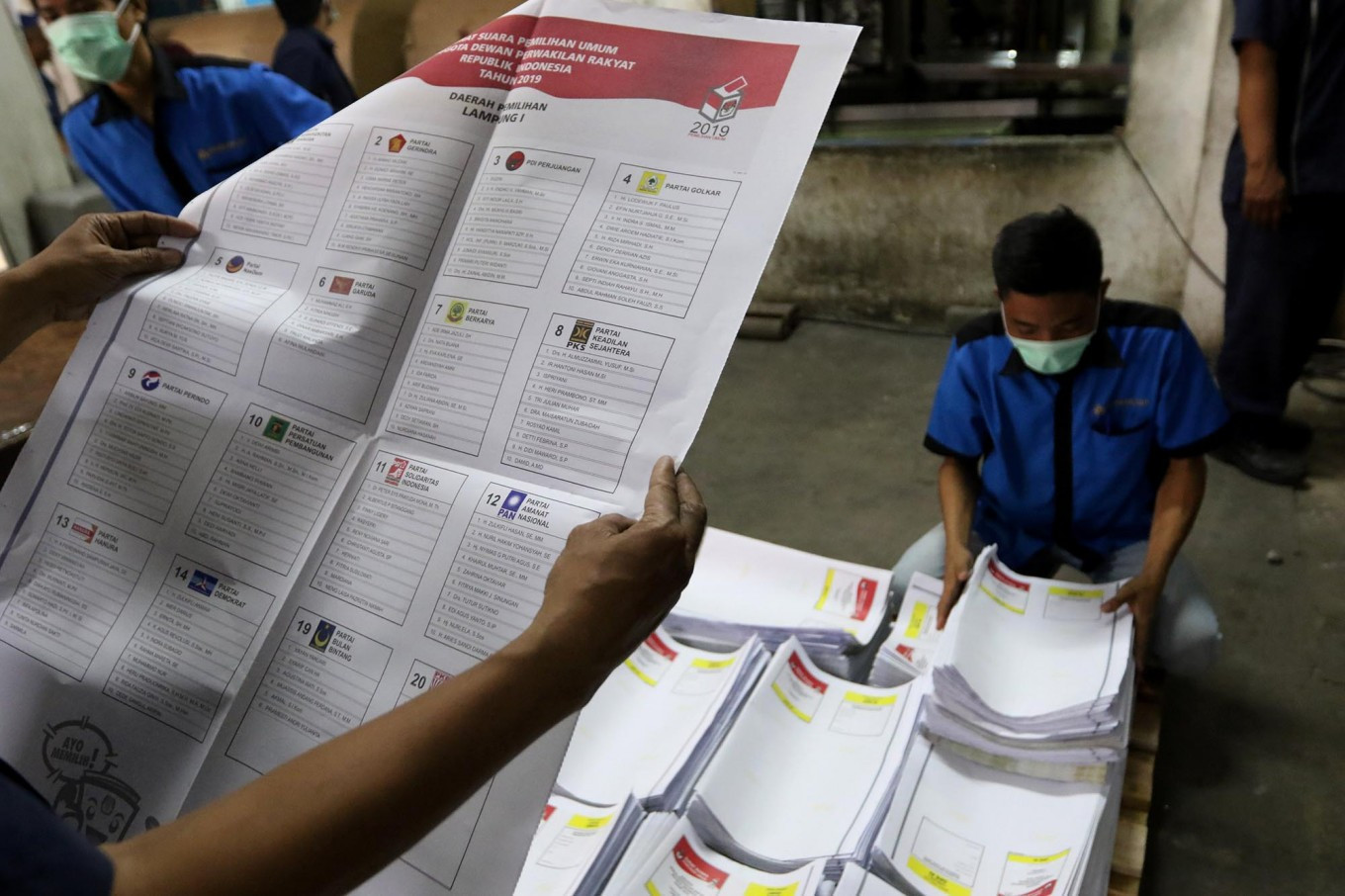News
RI mulls more cost-efficient but not necessarily most effective electoral system
Tenggara Strategics July 10, 2025 Staffs are folding the ballot papers. (JP/Dhoni Setiawan)
Staffs are folding the ballot papers. (JP/Dhoni Setiawan)
Holding general elections for a country the size of Indonesia is always a huge and complicated undertaking. The country is constantly struggling to find the most cost-efficient way of running multiple elections at the national and regional levels, but “effective” is never a goal as long as the electoral laws are drawn up by big political parties more interested in protecting their interests than ensuring people’s democratic rights.
Now the Constitutional Court has stepped in with a ruling that states that starting in 2029, the national and regional elections cannot be held in the same year as happened in 2024. The court argued the split would allow voters to better exercise their democratic rights as they can distinguish the different dynamics at play between national and regional elections.
The House of Representatives will now have to change the electoral laws accordingly. Some political parties did not take the ruling kindly, saying the court had gone beyond its remit in determining the content of legislation, which is the domain of the House.
The court last year also struck out the presidential thresholds in the electoral law, which means that in 2029, any political party eligible to contest the elections can put up their own presidential and vice-presidential candidates. The threshold has limited the number of candidates contesting the elections to only two or three since 2009.
The eight political parties in the House are still assessing how the latest ruling will impact their own electoral standing. They still have some control over the electoral laws.
Based on that ruling, the elections for president and vice president, members of the Regional Representatives Council, and the House of Representatives will be held in 2029. The election for the heads of regional administrations (governors, regents, and mayors) and members of the regional legislative councils (province and regency levels) will be held between 24 and 30 months later, meaning in 2031.
Cost is always a huge factor in organizing elections for a country of 285 million people, spread over many islands in the archipelago, and with the elections contested by more than 20 political parties.
The elections in February 2024 saw a total of 20,462 seats up for grabs, from the president down to the members of the city-level legislative councils. In November, the regional elections saw 545 positions for heads of local governments being contested. The country set up more than 800,000 polling stations run by more than 5 million volunteer workers.
The elections get ridiculously expensive since the tens of thousands of candidates try to outspend one another to win over the hearts of the voters.
The February 2024 election was billed as the largest single-day election in the world. Indonesia will lose that title in 2029 when the national and regional elections will be held in different years, maybe for the better of the voters, at least according to the Constitutional Court.
Prior to 2019, the presidential and legislative elections were held on different dates within the same year, while the elections for each head of the more than 500 local governments were held in different years.
In 2014, the House decided that in the future, all the elections should take place simultaneously, taking a cue from the Philippines, where all the elections are held on one day. During the presidential election year, which is held every six years, voters typically have to write the names of more than 32 candidates into their ballot paper for the positions of the president and vice president, and the various levels of national and local councils.
But when Indonesia held the presidential and legislative elections simultaneously for the first time in 2019, political parties learned that the presidential candidates stole the show. An earlier plan to include the elections for regional heads in the mix in 2024 was also shelved, with the latter held in November.
Now, the court has come up with a ruling that the regional elections must be held some two years after the national elections.
The big political parties, which control the legislation, will likely make sure their interests are protected while complying with the court ruling, while they amend the electoral laws. They still have some leeway in producing legislation that protects their interests.
One likely possible move is to do away with the direct election of heads of local government, something that President Prabowo Subianto has openly advocated. He suggested that these regional heads be elected by the local legislative councils, essentially taking power away from the people and putting it into the hands of political parties.
There have also been suggestions to do away with direct presidential elections, which were first introduced in 2004, and give that power back to the People’s Consultative Assembly, again largely controlled by the big parties, the way it was before.
But while direct presidential elections are mandated by the Constitution, the direct election of regional heads is based on legislation, something that the House can easily change. Amending the Constitution is much harder, though not at all impossible.
What we've heard
The Constitutional Court justices argue that separating the national and regional elections will streamline the electoral process, thus reducing the burden on organizers and political parties and ultimately enhancing the quality of democracy.

